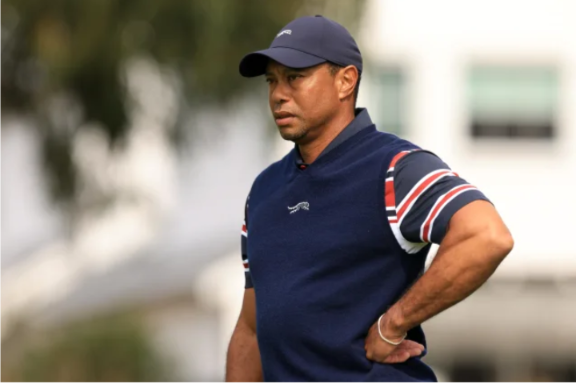Last Friday served as a stark reminder of Tiger Woods’ enduring significance to the PGA Tour and the sport of golf as a whole.
Though he may no longer be the dominant force he once was, Woods remains a compelling figure on the course. With his new line of apparel, paying homage to his iconic red Sunday shirts, he symbolizes a transition from the Old Tiger to a seasoned veteran of the game. Yet, expectations of his former dominance must be tempered with the reality of his physical limitations, including recent injuries and surgeries.
Woods’ return to PGA Tour action at Riviera marked his first appearance since last year’s Masters, where injury forced an early exit. However, his comeback was short-lived as flu-like symptoms and dehydration led to his withdrawal mid-round, leaving fans and tournament organizers disappointed.
Despite not facing the familiar challenges of back or ankle issues, Woods’ absence still dealt a blow to the event’s atmosphere and viewership. As fans speculated on his condition and potential return, Gary Woodland, one of Woods’ playing partners, noted the visible signs of Woods’ illness, underscoring the void left by his departure.
The incident raises broader questions about the future of golf beyond Woods’ era. As discussions swirl around a potential breakaway tour and financial negotiations with entities like the Saudi Arabia Public Investment Fund, the sport grapples with the looming question: Who will capture the attention of casual fans once Woods retires?
Even amidst a strong field at Riviera, featuring notable talents like Patrick Cantlay and Collin Morikawa, Woods remained the center of attention. His ability to draw massive galleries highlights the challenge faced by the sport in replacing his star power.

At 48 years old, Woods nears the end of his illustrious career. While he aims to surpass Sam Snead’s record with one more Tour victory, his recent struggles on the course underscore the inevitability of age catching up with even the greatest athletes.
Reflecting on his performance and physical condition, Woods acknowledges the challenges posed by his body’s limitations and the need for better preparation and rehabilitation. As he navigates the ups and downs of competitive golf, Woods remains a symbol of perseverance and dedication to the sport he has shaped for decades.
In the wake of his latest setback, golf fans are left to ponder a future without Woods’ unparalleled presence and impact. Yet, as the game evolves, his legacy as one of golf’s true icons will continue to inspire generations to come.
